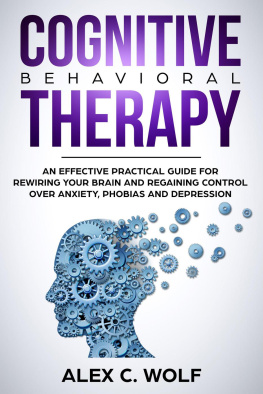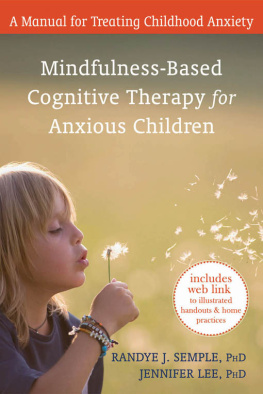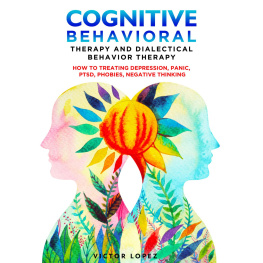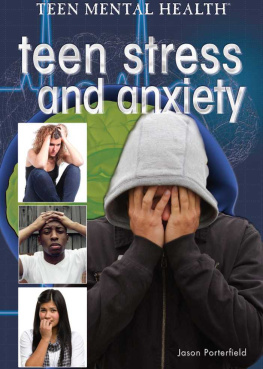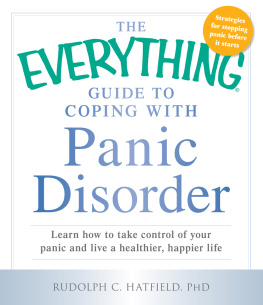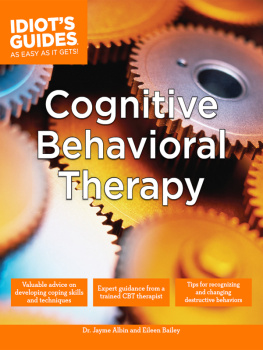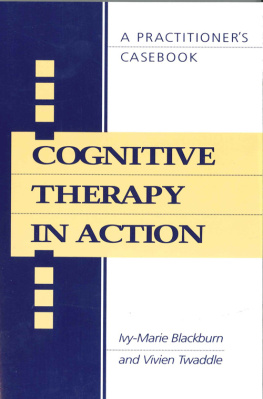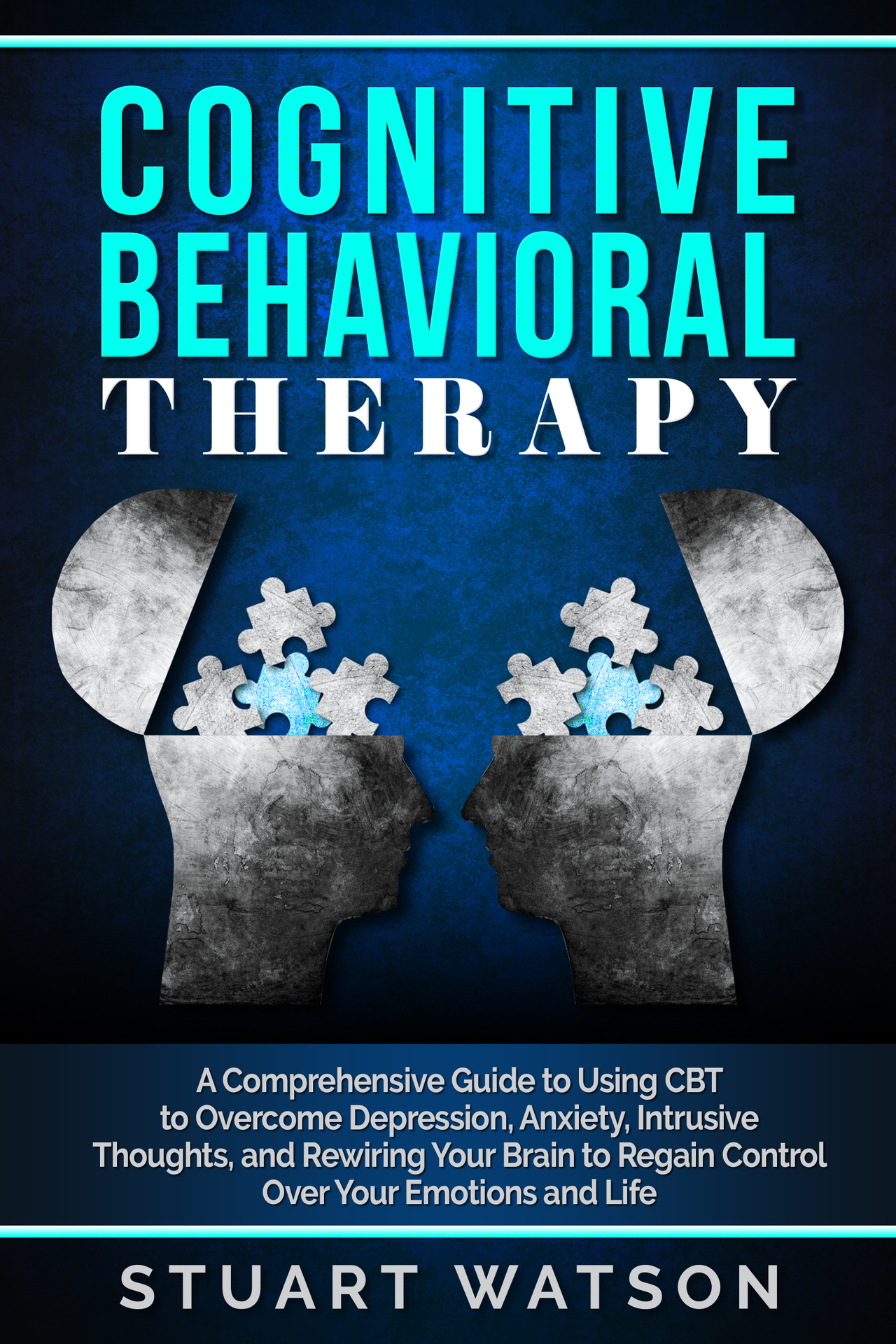Cognitive Behavioral Therapy
A Comprehensive Guide to Using CBT to Overcome Depression, Anxiety, Intrusive Thoughts, and Rewiring Your Brain to Regain Control Over Your Emotions and Life
Copyright 2019
All Rights Reserved. No part of this book may be reproduced in any form without permission in writing from the author. Reviewers may quote brief passages in reviews.
Disclaimer: No part of this publication may be reproduced or transmitted in any form or by any means, mechanical or electronic, including photocopying or recording, or by any information storage and retrieval system, or transmitted by email without permission in writing from the publisher.
While all attempts have been made to verify the information provided in this publication, neither the author nor the publisher assumes any responsibility for errors, omissions or contrary interpretations of the subject matter herein.
This book is for entertainment purposes only. The views expressed are those of the author alone, and should not be taken as expert instruction or commands. The reader is responsible for his or her own actions.
Adherence to all applicable laws and regulations, including international, federal, state and local laws governing professional licensing, business practices, advertising and all other aspects of doing business in the US, Canada, UK or any other jurisdiction is the sole responsibility of the purchaser or reader.
Neither the author nor the publisher assumes any responsibility or liability whatsoever on the behalf of the purchaser or reader of these materials. Any perceived slight of any individual or organization is purely unintentional.
Table of Contents
Introduction
Cognitive-behavioral therapy, otherwise known as CBT, is an incredibly well-known therapy method within the field of psychology. Yet, unless you work within this field you likely know very little about CBT, how it works, and why it is one of the best therapy methods around. In this book you will learn about the amazing affects this therapy has been proven to have. You can learn how to use cognitive behavioral therapy from within your own home, helping to treat anxiety, depression, post-traumatic stress disorder, panic disorder, obsessive-compulsive disorder, and more. No longer do you have to suffer in silence, simply existing through life. You can learn to heal and begin to actually live a full life again.
Whether you have been diagnosed with social anxiety disorder, major depression, post-traumatic stress disorder, or simply are struggling throughout your daily life without a diagnosis, CBT can help. While it is always best to go to a professional and receive a diagnosis of your condition, you can also use the tools of CBT independently at home, with or without an official diagnosis. You can learn to better understand your mind, overcome intrusive thoughts, cope with daily stress, and transform your negative thought patterns into something more positive. Cognitive-behavioral therapy is truly transformative, and with a little daily effort, you can change your entire life for the better.
By choosing to make a simple change in your life, taking one step forward a day at a time, you can use CBT for a better and more fulfilling life. Whether you are struggling under daily stress, numb from depression, or feeling panicked about various aspects of life, you can find healing. By working at it a little each day, you will find a brighter and better life than you ever imagined, all with the power of cognitive-behavioral therapy.
Chapter 1: The Basic Premise of CBT and how it Can Benefit You in Daily Life
Cognitive-behavioral therapy was developed during the 1960s by the hypothesis that more than a situation itself, it is how we view a situation that affects our feelings. For instance, if two people get into an argument, they may each experience vastly different feelings, even though they were both a part of the same situation. One individual may view the situation as a worst-case scenario, worrying that they have lost a friend and that they will never be able to resolve the argument. By viewing the situation in this way, the first individual will feel hopeless, depressed, and anxious.
On the other hand, while the second individual is also upset about the argument, they feel much more balanced emotions. Instead of feeling hopeless they feel hopeful that the situation can be remedied. Instead of feeling depressed and anxious, they feel stressed, but still have hope that their friendship will ensure, helping to keep the second individual calm. The second individual can feel calm and hopeful in spite of the stress of the argument because of how they view the situation. Unlike the first person, they dont view the situation as a worst-case scenario; instead they view it as a normal part of friendship and interaction. By keeping in mind that conflict is normal and can be dealt with, the second individual is better able to cope emotionally, thus allowing them to also handle the situation better.
These two individuals illustrate how during daily life the way we view our circumstances shapes our emotions. If you spill a glass of milk, you can view the situation in multiple ways. You can either view it as another failure in your life or you can view it as a simple slip up thats easily remedied. The way we view our everyday circumstances shapes our emotions and feelings, which then create habits that we continue to follow in the future. This is the most basic premise of cognitive-behavioral therapy or CBT.
How we view a situation, which leads to the development of our feelings, is known as the cognitive model. This model explains how our views are formed. By understanding this model, we can begin to change our views for the better, thereby positively affecting our worldview, emotions, and reactions. This cognitive model has three parts which are:
Core belief
Dysfunctional assumptions
Negative automatic thoughts
From these three aspects of the cognitive model, the core belief is what you begin with, which then leads to the development of dysfunctional assumptions and negative automatic thoughts, in turn. What are these core beliefs? Put simply, they are the beliefs we hold onto deeply without even realizing it. These beliefs were formed during our childhood, early life, and lived experiences and make up what we believe about the world, others, ourselves, and even the future. We unconsciously hold these thoughts to be absolute truth, unwavering in our belief.
Example of core beliefs includes believing Im worthless about yourself, the world is cruel about the overall world and others, and nothing good will come about the future.
Our rigid and extreme beliefs are known as dysfunctional assumptions. These assumptions do not truly reflect reality; they are excessive and over-generalized. The problem with these assumptions is that they frequently get in the way of our goals and emotional well-being instead of promoting positive outcomes. Common themes for dysfunctional assumptions are categorized as being based on control, achievements, and acceptance. Some examples include thinking If I cant do it perfectly, then I might as well not do it at all. If they dislike me then something must be wrong with me. and Its a sign of weakness to ask for help.
Negative automatic thoughts are the third and final phase of the cognitive model. While our core belief is usually subconscious - and we are usually unaware of our dysfunctional assumptions - negative automatic thoughts take place in our conscious mind. We are aware of these thoughts, even if we dont realize the harm that they are causing us. These thoughts are involuntary and are most negative in people with depression, anxiety, post-traumatic stress disorder, and obsessive-compulsive disorder. People with these disorders often think of a situation as more disastrous or harmful than is true and also underestimate their ability to cope with the situation. Thoughts such as Im completely useless I made a mistake, now everything is ruined If I try Ill only fail, so whats the point If I dont get this job Ill never get one and Bad things always happen to me are all examples of negative automatic thoughts.


